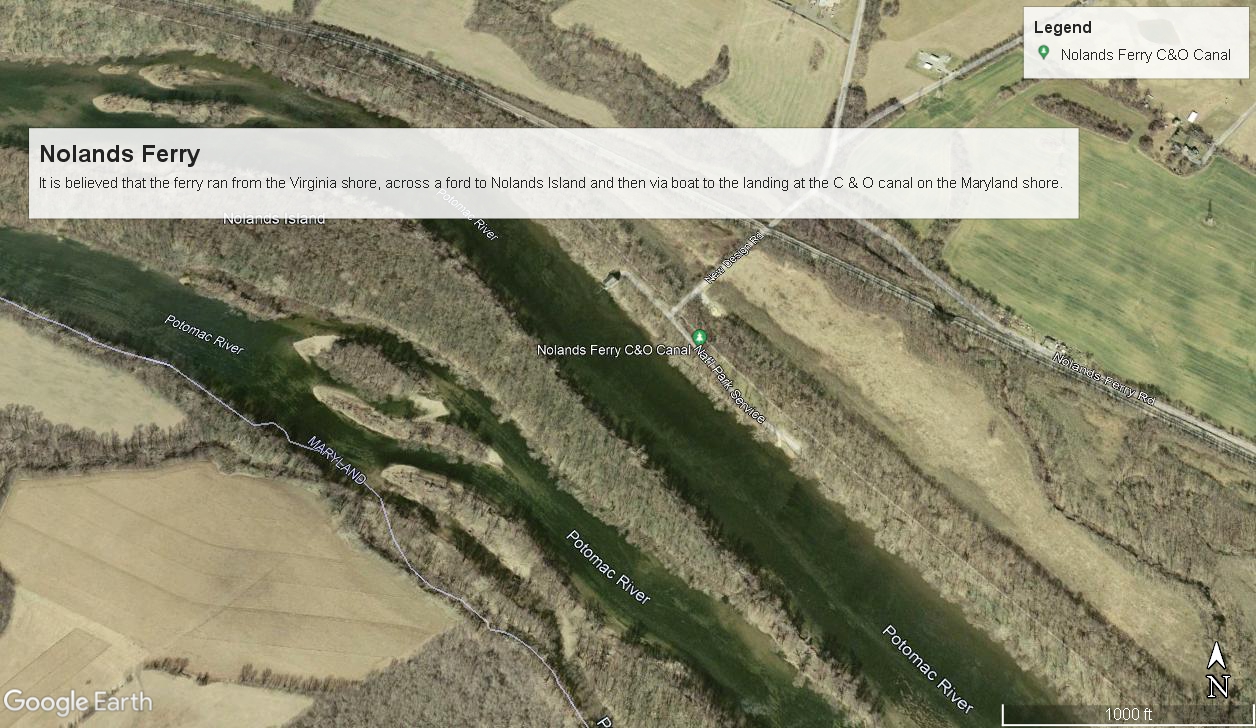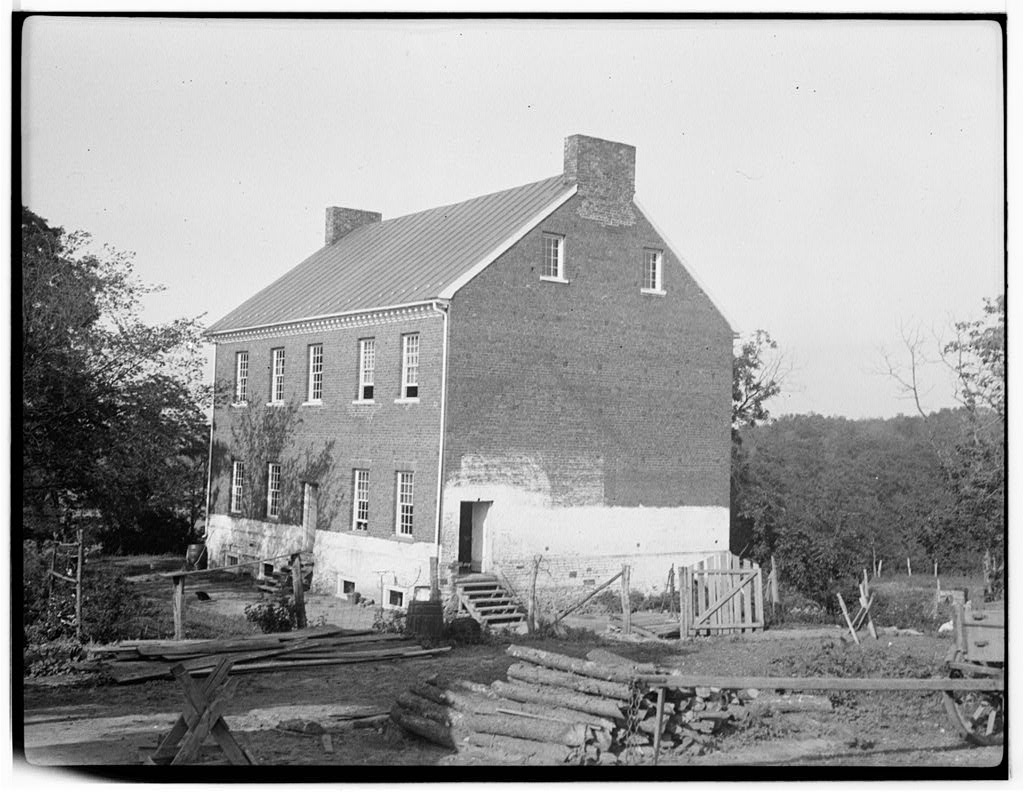Nolands Ferry I Archeological Site on:
[Wikipedia]
[Google]
[Amazon]
Nolands Ferry I Archeological Site is an  Noland's Ferry, for which the site is named, has a broad history from the mid-1700s, with some of America's founding leaders among its customers.
Noland's Ferry, for which the site is named, has a broad history from the mid-1700s, with some of America's founding leaders among its customers.

Google Earth
{{Native Americans in Maryland Archaeological sites in Frederick County, Maryland Archaeological sites on the National Register of Historic Places in Maryland Native American history of Maryland Paleo-Indian archaeological sites in the United States Woodland period National Register of Historic Places in Frederick County, Maryland Ferries of Maryland Ferries of Virginia Transportation in Loudoun County, Virginia Transportation in Frederick County, Maryland
archaeological site
An archaeological site is a place (or group of physical sites) in which evidence of past activity is preserved (either prehistoric or historic or contemporary), and which has been, or may be, investigated using the discipline of archaeology an ...
near the historic Noland's Ferry boat landing at mile 44.58 on the C&O Canal
The Chesapeake and Ohio Canal, abbreviated as the C&O Canal and occasionally called the "Grand Old Ditch," operated from 1831 until 1924 along the Potomac River between Washington, D.C. and Cumberland, Maryland. It replaced the Potomac Canal, wh ...
and Tuscarora Tuscarora may refer to the following:
First nations and Native American people and culture
* Tuscarora people
**''Federal Power Commission v. Tuscarora Indian Nation'' (1960)
* Tuscarora language, an Iroquoian language of the Tuscarora people
* ...
. The Archeological Site is a prehistoric occupation site located in the Monocacy region of southern Frederick County, Maryland
Frederick County is located in the northern part of the U.S. state of Maryland. At the 2020 U.S. Census, the population was 271,717. The county seat is Frederick.
Frederick County is included in the Washington-Arlington-Alexandria, DC-VA-MD-WV ...
. Diagnostic artifacts at the site indicate that the site was almost continuously inhabited from the Paleo-Indian period to the early 19th century, with the most substantial inhabitation occurring during the Late Woodland period
In the classification of archaeological cultures of North America, the Woodland period of North American pre-Columbian cultures spanned a period from roughly 1000 BCE to European contact in the eastern part of North America, with some archaeologi ...
.
The site was listed on the National Register of Historic Places
The National Register of Historic Places (NRHP) is the United States federal government's official list of districts, sites, buildings, structures and objects deemed worthy of preservation for their historical significance or "great artistic v ...
in 1985.
 Noland's Ferry, for which the site is named, has a broad history from the mid-1700s, with some of America's founding leaders among its customers.
Noland's Ferry, for which the site is named, has a broad history from the mid-1700s, with some of America's founding leaders among its customers.
Ferry history
Noland's Ferry began operating in the mid-1700s and carried travelers, their wagons, carriages and livestock across thePotomac River
The Potomac River () drains the Mid-Atlantic United States, flowing from the Potomac Highlands into Chesapeake Bay. It is long,U.S. Geological Survey. National Hydrography Dataset high-resolution flowline dataThe National Map. Retrieved Augus ...
between Loudoun County
Loudoun County () is in the northern part of the Commonwealth of Virginia in the United States. In 2020, the census returned a population of 420,959, making it Virginia's third-most populous county. Loudoun County's seat is Leesburg. Loudoun C ...
, Virginia
Virginia, officially the Commonwealth of Virginia, is a state in the Mid-Atlantic and Southeastern regions of the United States, between the Atlantic Coast and the Appalachian Mountains. The geography and climate of the Commonwealth ar ...
and Frederick County, Maryland
Frederick County is located in the northern part of the U.S. state of Maryland. At the 2020 U.S. Census, the population was 271,717. The county seat is Frederick.
Frederick County is included in the Washington-Arlington-Alexandria, DC-VA-MD-WV ...
. During the American Revolutionary War
The American Revolutionary War (April 19, 1775 – September 3, 1783), also known as the Revolutionary War or American War of Independence, was a major war of the American Revolution. Widely considered as the war that secured the independence of t ...
it was used by the U. S. Army and during the Civil War, by the armies of both the North and South. The ferry remained in operation until the early 1900s. Philip Noland was the first Noland to run the ferry and his wife was the daughter of Francis Awbrey (also Aubrey). Awbrey was granted a license for a ferry in 1738 which ran near the Noland Ferry crossing site. The family ferry business got its start at that time and their son Thomas continued to run Noland's Ferry. Thomas Noland's wife Mary Eleanor Luckett is the daughter of William Luckett who had a nearby ferry that Thomas took over.
The first original record that mentions Noland's Ferry pre-dates Loudoun County and is in the Fairfax County records of March 20, 1754. The registration for the Catoctin Rural Historic District, section 8 page 3, states that "... As early as 1748 Philip Noland had established a ferry at the site...". In 1756, in a political infight, Philip Noland was denied a license to operate the ferry by the Virginia House of Burgesses
The House of Burgesses was the elected representative element of the Virginia General Assembly, the legislative body of the Colony of Virginia. With the creation of the House of Burgesses in 1642, the General Assembly, which had been established ...
which awarded a license to Josiah Clapham (who was a voting member of that legislature). In 1778 Clapham's license was discontinued and Philip Noland, who appears to have stayed in business without a Virginia license, was awarded one. Because the Potomac River
The Potomac River () drains the Mid-Atlantic United States, flowing from the Potomac Highlands into Chesapeake Bay. It is long,U.S. Geological Survey. National Hydrography Dataset high-resolution flowline dataThe National Map. Retrieved Augus ...
is totally in Maryland, as is Noland's Island, approval from Virginia's House of Burgesses appears not to have been critical.
In the yellow fever
Yellow fever is a viral disease of typically short duration. In most cases, symptoms include fever, chills, loss of appetite, nausea, muscle pains – particularly in the back – and headaches. Symptoms typically improve within five days. In ...
epidemic of 1793, in an attempt to keep the fever out of Virginia, the governor ordered that Nolands and six other Potomac ferries limit travel for those coming from Philadelphia who were required to wait on the Maryland side of the river for six days and were only allowed to proceed if they were without symptoms.
Potomac River crossing
Travel between Virginia and Maryland necessitated crossing thePotomac River
The Potomac River () drains the Mid-Atlantic United States, flowing from the Potomac Highlands into Chesapeake Bay. It is long,U.S. Geological Survey. National Hydrography Dataset high-resolution flowline dataThe National Map. Retrieved Augus ...
, the fourth largest east coast river, which has always been an obstacle for travel over land. Several ferries were established to serve that area and Noland's Ferry ran from Leesburg to Maryland
Maryland ( ) is a state in the Mid-Atlantic region of the United States. It shares borders with Virginia, West Virginia, and the District of Columbia to its south and west; Pennsylvania to its north; and Delaware and the Atlantic Ocean to ...
for over 150 years. Noland's Ferry Road leads to a boat ramp on the C&O canal outside Washington, D.C., which was the ferry's Maryland location. In Leesburg, just across the river, the location is marked by Noland's Ferry Road and a house on that road which was built around 1800 by a Noland who ran the ferry. Noland's Island is nearby in the Potomac River.
Carolina Road
The ferry was often used by travelers heading to the Carolinas. The location of theCarolina Road
The Carolina Road or the "Old Carolina Road" are names for various sections of the Great Wagon Road and other routes in colonial America. "The 'Old Carolina Road', extending from Lancaster, Pennsylvania to the Yadkin Valley, was one of the most he ...
in Northern Virginia is near today's Route 15. In the 1700s, Noland's Ferry was a link between the Virginia and Maryland sections of the Carolina Road.
Revolutionary War
Noland and Luckett family members were strong supporters of American independence. William Luckett was a colonel in the Maryland militia and Thomas No and fought in the Maryland "Flying Camp", a quick response group. Thomas Hussey Luckett and David Luckett were members of the Continental Army. During the Revolutionary War, the American army sent troops andPOWs
A prisoner of war (POW) is a person who is held captive by a belligerent power during or immediately after an armed conflict. The earliest recorded usage of the phrase "prisoner of war" dates back to 1610.
Belligerents hold prisoners of war ...
across the ferry and stored munitions in the ferry warehouses.
Washington and Jefferson
George Washington
George Washington (February 22, 1732, 1799) was an American military officer, statesman, and Founding Father who served as the first president of the United States from 1789 to 1797. Appointed by the Continental Congress as commander of th ...
and Thomas Jefferson
Thomas Jefferson (April 13, 1743 – July 4, 1826) was an American statesman, diplomat, lawyer, architect, philosopher, and Founding Fathers of the United States, Founding Father who served as the third president of the United States from 18 ...
were among the ferry's customers. Jefferson noted that he went via Noland's Ferry in July 1802 on the way from Washington to Monticello and Washington wrote in his diary that he ate at "Knowlands Ferry" on August 9, 1785.

Unfinished ferry house
Sometime after the Revolutionary War ended, a large house was built on the grounds of the ferry and although construction was completed enough to be weathertight, key elements of the house were not finished, including interior woodwork and plaster. The house remained unfinished until the 1950s and the mystery as to why was the subject of a ''Washington Star
''The Washington Star'', previously known as the ''Washington Star-News'' and the Washington ''Evening Star'', was a daily afternoon newspaper published in Washington, D.C., between 1852 and 1981. The Sunday edition was known as the ''Sunday Star ...
'' magazine article in 1949 with the inaccurate title "200 Year Old House That Was Never Finished".
References
External links
*, including photo in 1978, at Maryland Historical TrustGoogle Earth
{{Native Americans in Maryland Archaeological sites in Frederick County, Maryland Archaeological sites on the National Register of Historic Places in Maryland Native American history of Maryland Paleo-Indian archaeological sites in the United States Woodland period National Register of Historic Places in Frederick County, Maryland Ferries of Maryland Ferries of Virginia Transportation in Loudoun County, Virginia Transportation in Frederick County, Maryland